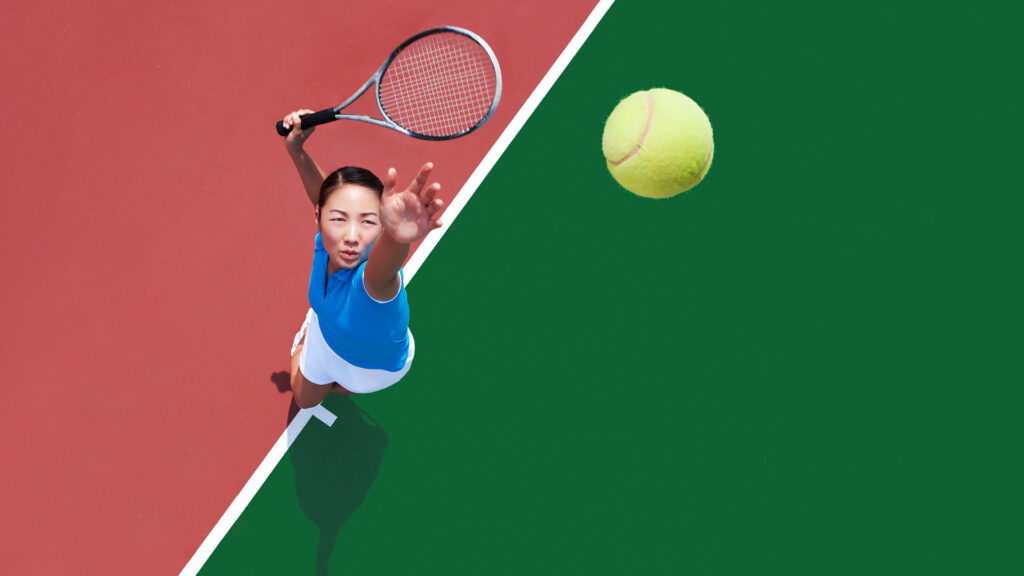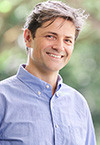Competition and the Environment: Less Willing to Fight On When the Air is Hot or Dirty
June 30, 2023
IN BRIEF | 5 min read
- A study by NUS Economics faculty Alberto Salvo, Haoming Liu, and Jingfeng Lu has found that heat and pollution significantly impact the play strategy of professional tennis players.

| By Associate Professor Alberto Salvo |
In popular outdoor sports competitions, players, fans, and advertisers have to contend with an ambient environment of varying quality that is hard to predict weeks or even days in advance. The environment may deteriorate, for instance, because it is unseasonably hot, or due to the build-up of air pollution from excessive use of fossil fuels that calm winds have failed to clear.
In research published last month, my colleagues Haoming Liu, Jingfeng Lu, and I ask how heat and pollution impact the strategy of professional athletes. These super-achievers are at the top of their game – they are highly skilled, fit, and disciplined. In short, these individuals are adept at the physical, emotional, and strategic aspects of their sport.
To understand the relationship between the environment and the strategy of professional contestants, we looked at Women’s Tennis Association (WTA) tournaments held in Melbourne in the summer, when the weather can get very hot, and in varying cities and seasons in China, with air that can be loaded with particle pollutants.
The 2004-2016 matches we studied are singles, “matching” two opponents. The matched players are often of similar ability, as inferred from betting markets and WTA rankings. As play starts, each competitor has a similar chance of winning and taking the prize money, which makes the confrontation all the more exciting for fans and lucrative for sponsors.
These tennis matches are played as “best of 3” contests. The players fight over three successive sets, each lasting almost one hour. The winner of the match is the player who first wins two sets. So, a third set (“best of 3”) is disputed only if after the second set the playing field remains level, each player having secured one set.
A protracted contest that is fought over three sets, instead of two, can raise the duration of play by over 50 per cent. We hypothesised that players would be less willing to play over three sets, and “get it over in two”, particularly when playing in the heat or in light haze.
An alternative possibility, voiced by a WTA spokesperson, was that a degraded environment would not change the likelihood that players put up a fight over three sets. While heat and pollution might make players more tired, they would be equally tired, so the tightness of the competition might not change.
The intriguing fact we uncover lends weight to the first hypothesis. When the weather is cool and the air is clean, there is a 45 per cent chance that spectators and advertisers are treated to a prolonged competition, in which one player gets ahead but her similarly able opponent fights back and takes the match to a nail-biting third set.
Now add heat or pollution to the picture and the probability that fans and sponsors enjoy a lengthy contest drops precipitously, by about 15 percentage points to 30 per cent.
So an almost 1 in 2 chance of a really exciting spectacle drops to a 1 in 3 chance.
Our interpretation is that sports professionals are calculating individuals, at every turn balancing the expected returns from staying in the game against the cost of exerting effort, including the likelihood they suffer an injury and retire for the season.
A player who is paired against an opponent of similar skill may, for fortuitous reasons, start out by losing the first set. She would then ponder: How much should I fight to try to level the score in the second set and take this encounter to yet a third tough set?
As the environment deteriorates, this calculation shifts even more in favour of the player who starts out winning, a process known as momentum. Her unlucky opponent feels that it is just not worth fighting back as much, only to stay longer in those harsh conditions in an unclear attempt to win the contest.
Therefore, the player who falls behind now volleys the ball back (sponsors and fans would not simply let her walk out) and gets the contest over and done with. Fans, hot-dog sellers, and TV advertisers will have to wait another day for an exciting contest.
We are able to quantify how heat and pollution change the willingness to fight on. For example, raising the temperature from 27 to 37 Celsius reduces a contestant’s expected payoff by US$670. The details can be found in the open-access article here.
What we learn from the tennis court has implications beyond an outdoor sports industry that enjoys a protracted competition. The strategic behaviour applies equally to other competitive ‘tournaments’ where we observe ‘players’ deciding to settle early as the competitive environment – natural, corporate, or regulatory – deteriorates.
Take a corporate office for example. The management often puts job promotion candidates through projects, tasks and challenges that test their ability, akin to a multi-stage competition similar to tennis tournaments. In that situation, difficult working conditions which can be both physical and emotional can blunt candidates’ incentives to fight on and compromise the organisation’s ability to identify the most suited candidate for promotion.
In tennis, with contestants who by chance fall behind deciding to throw in the towel, the player with the head start wins, but society – tennis fans, sponsors, and TV advertisers – can lose out.
All the more reason to protect our precious environments.
About the Author
 Alberto Salvo is Associate Professor, Dean's Chair, and Deputy Head for Research with the Department of Economics at the NUS Faculty of Arts and Social Sciences. He studies how the behaviour and incentives of economic agents, such as households, workers, and firms, interact with scarce environmental resources, such as climate, urban air, and water. Beyond NUS, Assoc Prof Salvo is a co-editor at the Journal of the Association of Environmental and Resource Economists.
Alberto Salvo is Associate Professor, Dean's Chair, and Deputy Head for Research with the Department of Economics at the NUS Faculty of Arts and Social Sciences. He studies how the behaviour and incentives of economic agents, such as households, workers, and firms, interact with scarce environmental resources, such as climate, urban air, and water. Beyond NUS, Assoc Prof Salvo is a co-editor at the Journal of the Association of Environmental and Resource Economists.
This story first appeared in NUSnews on 30 June 2023.

